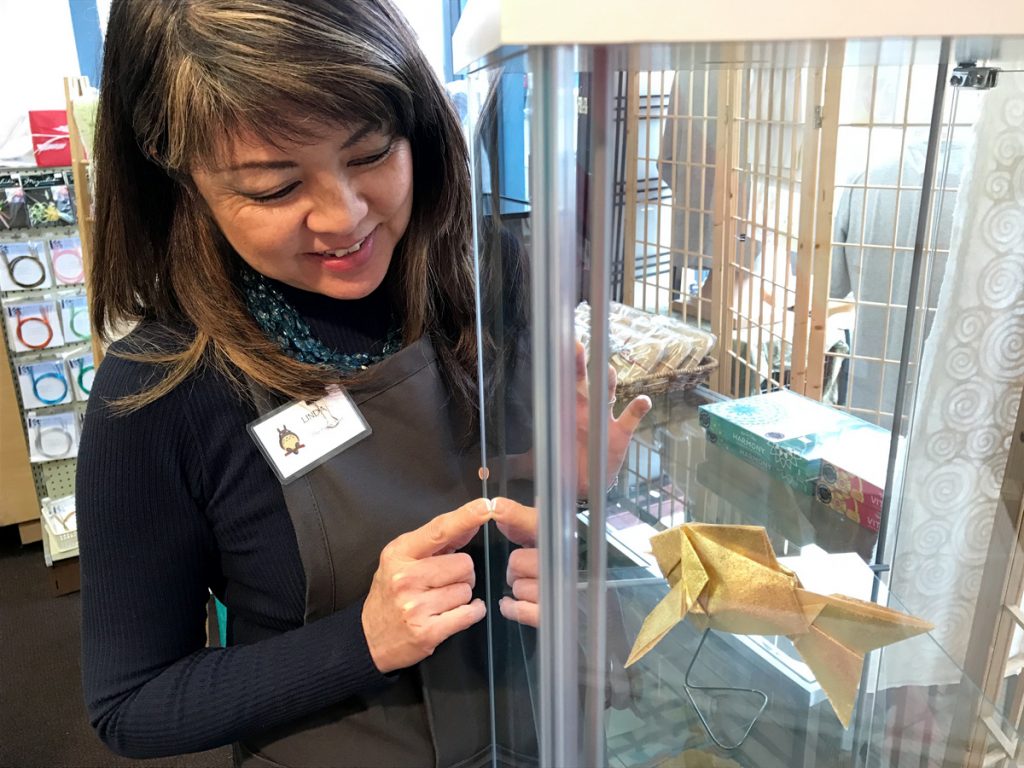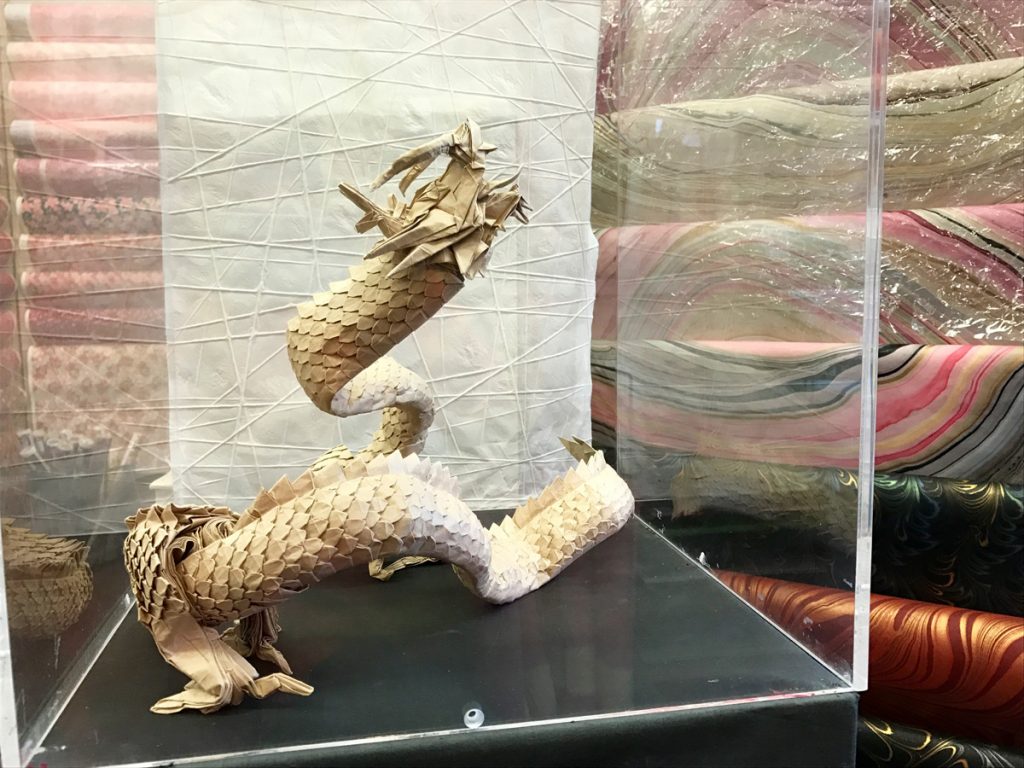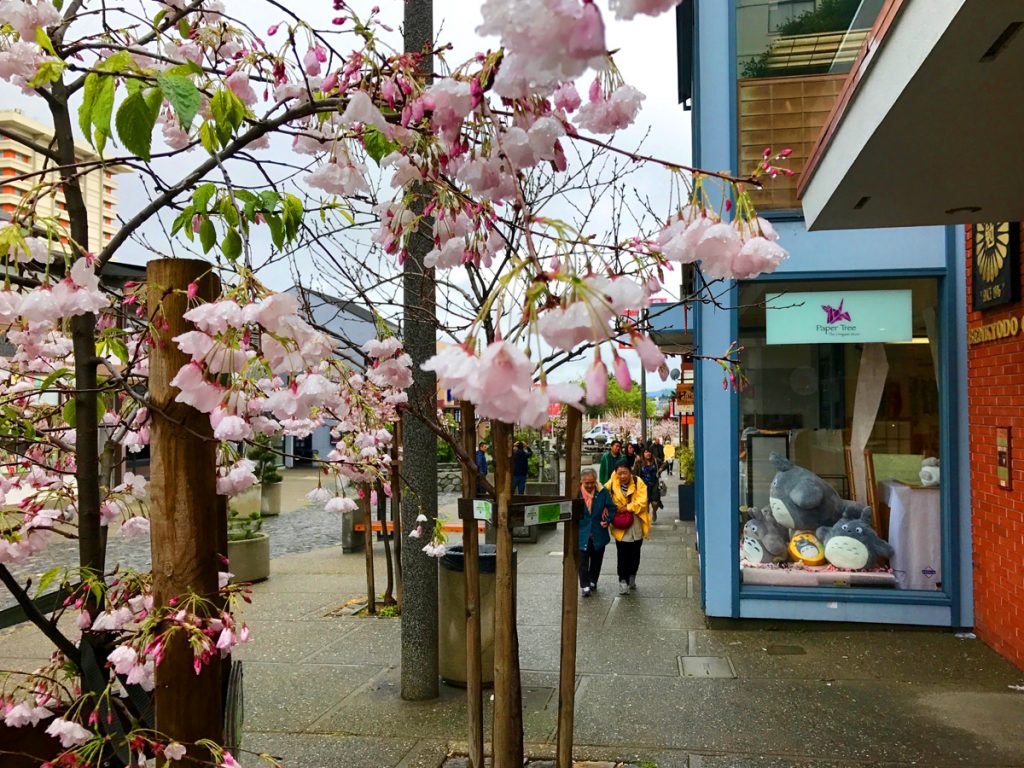By FRAN MORELAND JOHNS
If you’re interested in creating a bit of art to make your home the envy of the neighborhood, here’s how: Pick up a 6-by-6-foot piece of paper at Paper Tree, located at 1743 Buchanan in Japantown. Fold it carefully about a thousand times or so in precisely the proper manner and voila — a dragon such as few have ever seen.
You may want to practice on something slightly less elaborate. But a glimpse of “Ryujin 3.2,” the dragon created by one of the world’s most highly skilled origami artists, now on display at the Paper Tree, is definitely an inspiration.
Origami is the ancient art of folding paper into limitless shapes. While other cultures have adapted paper-folding into various traditions, it is most closely associated with Japanese culture and heritage. It was the aspiration to honor and perpetuate this cultural tradition that led Nobuo and Shizuko Mihara to found Paper Tree in 1968. The shop is one of only a handful of family owned and run businesses remaining in Japantown.
Nobuo Mihara was 11 when he was interned with his father Tokinobu Mihara at Heart Mountain Relocation Center in Wyoming in the spring of 1942. With his grandparents already on buses headed for the camp, U.S. military troops came to take Nobuo, his 9-year-old brother Sam and his parents to join them. His grandfather would lose his sight because of inadequate treatment and die in the camp. The rest of the family was released from Heart Mountain after the war. They came home to find their stored possessions had been looted and stolen.
Undeterred, Tokinobu Mihara rebuilt his family’s life and made significant contributions to his heritage and to his adopted country. The Miharas owned a publishing and import business — Oriental Culture Books, based in Japantown — and published the first English translation of the Japanese-American dictionary. In the 1950s, they published one of the first origami books in English.
Today, Paper Tree carries on the tradition. Nobuo and Shizuko Mihara can usually be found in the store, along with their daughter Linda. Another daughter, Vicky, runs an origami business in Berkeley. Their son Roger, now retired, is the only child who did not choose an origami career. Paper Tree is filled with books offering remarkable examples of origami art, plus a wide assortment of paper for everything from small crafts to shoji screens, and related supplies such as Kami cords — shiny, twine-like ribbons made of foil-wrapped paper and used for decorating money envelopes or tying special gifts. There are also assortments of Yuzen — beautiful papers with patterns similar to those of the traditional Japanese dress.
The shop also hosts regular classes and sponsors the origami portion of the Cherry Blossom Festival every April. Since their childhood, when they sat outside the store demonstrating origami, Linda and Vicky Mihara have taught the art of delicate folding. According to Linda, who says she was hugely influenced by her grandfather, he saw teaching origami to new generations as a way to preserve an historic element of Japanese culture.
“My first teaching experience was in fourth grade at Raphael Weill Elementary School, which is now Rosa Parks Elementary,” Linda Mihara says. “I liked to sit and fold during recess, and one day the teacher asked if I would teach the others in our class.” Their teaching tradition continues. Linda and Vicky still teach classes on both sides of the bay and can be found demonstrating origami at festivals.
Among the extraordinary pieces on display at the shop are a black and white tiger, designed by Hideo Komatsu and folded by Steve Zheng, and Linda Mihara’s “Peace Sphere,” comprised of 18 cranes folded and shaped into a circle from a single sheet of paper with a few specific cuts. Linda also recently completed the world’s largest origami birthday cake, commissioned in celebration of the first (paper) anniversary of Great Wolf Lodge Indoor Waterpark and Resort in Anaheim. The cake stands nine feet tall and features animals from the Pacific Northwest, including origami wolves, bears and beavers.
Despite the complexity of the elaborate examples on display in Paper Tree, Linda Mihara believes anyone can learn to create origami masterpieces. She teaches groups of 7- to 10-year-olds, as well as adult students — and cites one local folder, now 91, who first learned the craft in his 80s.
Filed under: Art & Design








